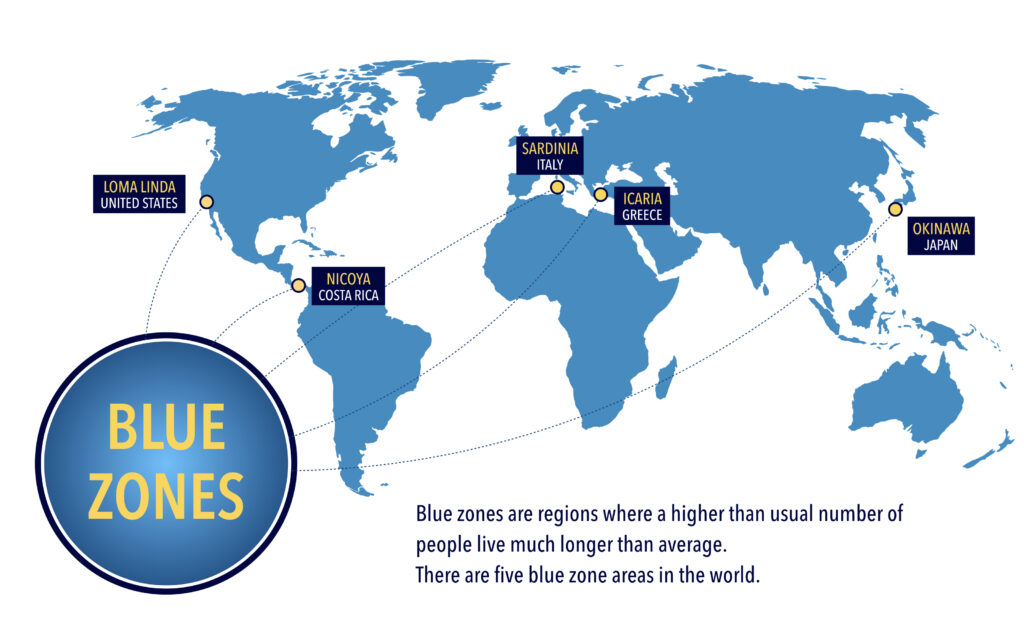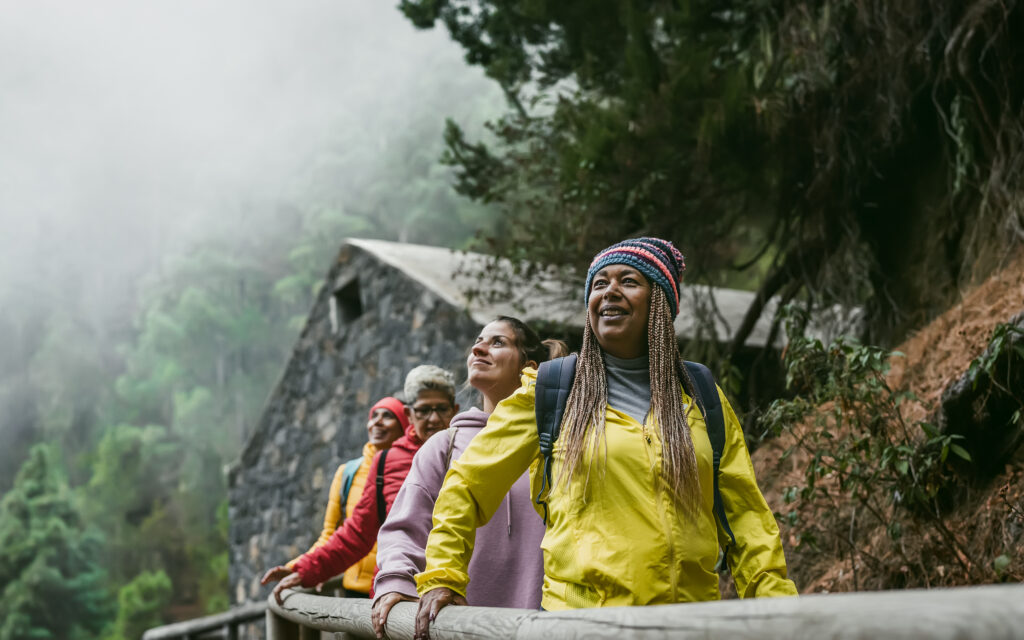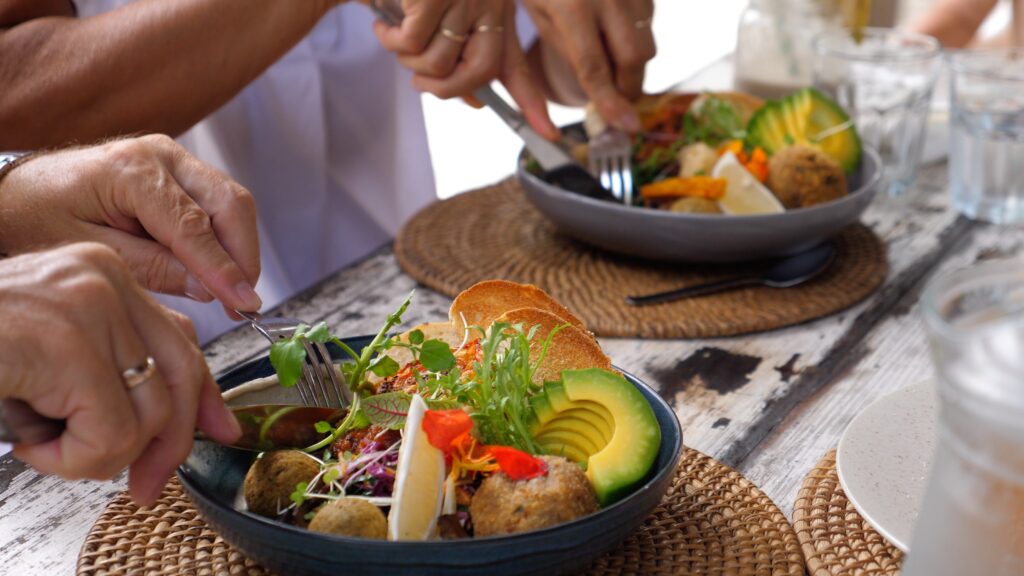What is a Blue Zone? And What It Can Mean for Hospitality
When someone celebrates their 100th birthday, people often ask, “What is your secret to a long and healthy life?” Because hitting centenarian status isn’t exactly typical — unless you live in a Blue Zone. So what is a Blue Zone, exactly? We’re glad you asked!
Blue Zones, Defined
These are geographic areas that boast some of the globe’s oldest populations. National Geographic Explorer and Fellow Dan Buettner was inspired by the demographic work of Gianni Pes and Michel Poulain, who first put these locations on the map — literally circling them in blue (hence, the name). These extraordinary places were introduced to the rest of us through Buettner’s book, “The Blue Zones,” which became a worldwide movement to help people live longer and better.
Where are the Original 5 Blue Zones in the World?

Spanning three of the globe’s continents — Europe, Asia and North America — the original five Blue Zones don’t immediately seem much alike:
- Ikaria, Greece: A small island in the Aegean Sea with nearly zero cases of dementia.
- Loma Linda, California: A tight-knit community of Adventists.
- Sardinia, Italy: Home to the most males 100+ years old.
- Okinawa, Japan: An island in the South Pacific that boasts the longest-lived women.
- Nicoya, Costa Rica: Situated on the other side of the Pacific, residents are twice as likely as Americans to reach age 90 in good health — even though the two countries share a continent.
What are the Key Characteristics of Blue Zones?

When these five lands of the long-living were studied, Buettner and his team of demographers, anthropologists and scientists identified evidence-based common denominators they call the Power 9:
- Move Naturally: Environments that inherently put people in motion — examples include gardening and manual labor inside and outside the home.
- Purpose: The answer to why they wake up in the morning — this sense of purpose was found to add seven years to life expectancy.
- Downshift: Basic routines to reduce stress — these varied by Blue Zone, ranging from wine drinking to napping.
- 80% Rule: Only eating to 80% fullness and consuming the smallest meal as their last, either in the late afternoon or early evening.
- Plant slant: Consuming a mainly bean-based diet, limiting meats to just five times a month and restricting serving sizes to three or four ounces.
- Wine @ 5: With the exception of the Adventists in Loma Linda, Blue Zone residents drink alcohol regularly in moderation — typically one or two glasses daily.
- Belong: Being part of a faith-based community. It was estimated that attending these types of services four times a month increased life expectancy between four and 14 years.
- Loved ones first: With family at the center of it all, these populations commit to a life partner, spend quality time with their kids and keep aging parents and grandparents in their homes.
- Right tribe: Maintaining social circles of like-minded people to support healthy behaviors.

Who Aspires to the Blue Zone Lifestyle?
Of course, the desire to lead a long and healthy life extends far beyond the borders of Blue Zones. The wellness travel trend remains a powerhouse for the tourism and hospitality industry. (Check out just a few of our past blog posts about it here, here and here.) It spans traveler types — including solo, couples, families and friends — as well as generations, income levels and other demographics. Overarching motivations can include an escape from everyday stresses, a reconnection with nature, the start of a personal growth journey and the drive to try new things.
So How Can All of This Boost Heads-In-Beds?
Hotels and resorts simply need to look at the Power 9 to develop compelling offerings for travelers who want to sample the Blue Zone lifestyle during their stay. We’re sharing some idea starters to help kick it off at your property:
- If you have an on-site garden, invite guests to join your chef for a tour and talk, with the chance to get some dirt under their nails with a little time to toil in the soil.
- Offer community service initiatives to add meaning and purpose to their stay.
- Add a naptime specials section to your room service menu that could include a selection of herbal teas, tart cherry juice, berry platter, cheese plate and other sleep-inducing selections.
- Increase options for plant-based meals — a cornerstone of the Blue Zone diet — in your restaurants, along with lighter fare choices for your dinner service.
- Host a daily happy hour at 5 p.m. with special pricing on glasses of Sardinian Cannonau wine.
- Invite expert speakers to share insights on healthy living.

As the Hospitality Business Review 2025 Travel Marketing Agency of the Year, you just know we have more ideas where that came from. Ready to put our expertise to work for your property? Contact Lynn Kaniper at 609.466.9187 ext. 117 or lkaniper@danacommunications.com to start the conversation.